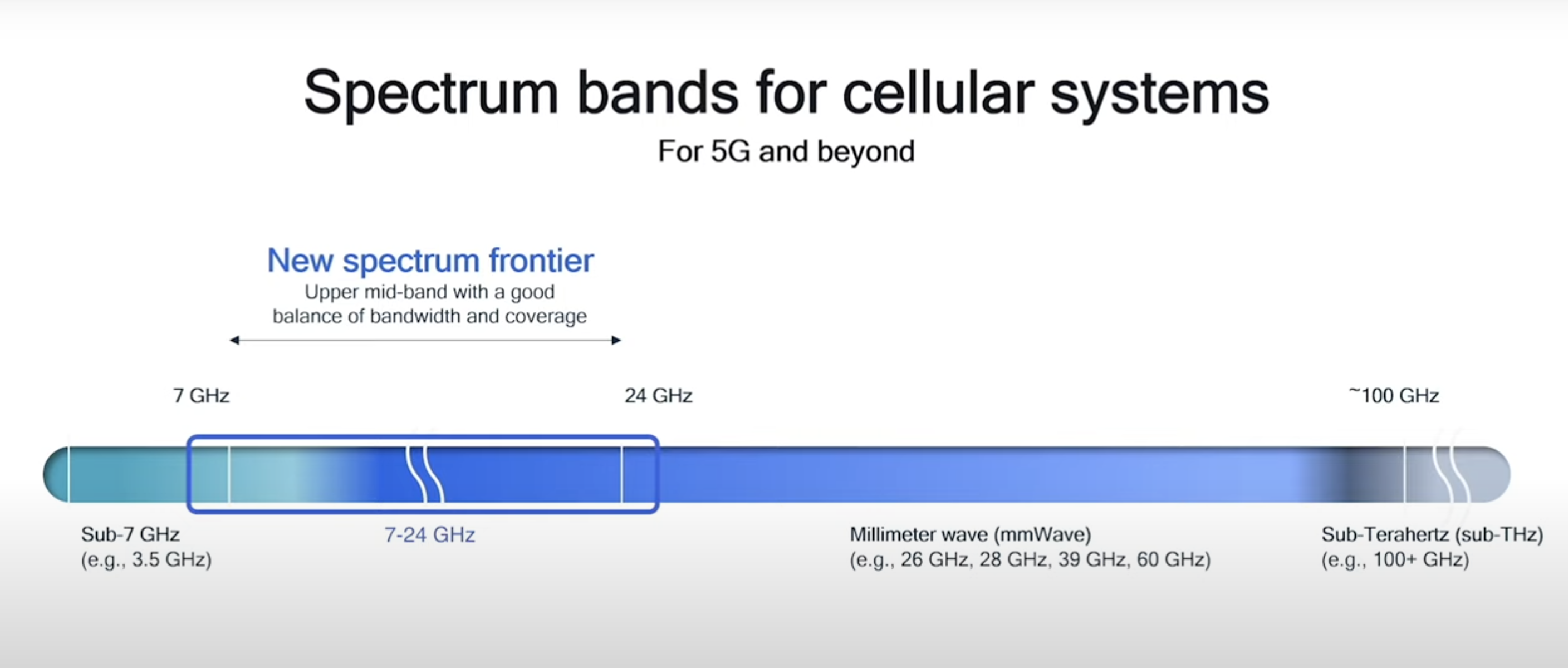Sub-band full-duplex, Giga MIMO, sub-THz and the march to the Terabit-per-second era
At its campus in Southern California, Qualcomm Technologies’ R&D team demonstrated how advanced Massive MIMO technologies like sub-band full-duplex (SBFD) and Giga-MIMO will continue to drive wide-area 5G adoption, help operators make the most of valuable spectrum resources, and bring to life new use cases like boundless augmented reality.
Massive MIMO radios group together a large number of antennas at the transmitter and receiver to provide increased throughput and spectral efficiency, and today, with static TDD transmissions, downlink and uplink signals take turns when transmitting and receiving. But, on its standalone 5G network that uses 100 megahertz of 3.5 GHz spectrum and multiple, 256-element Massive MIMO radios, Qualcomm Technologies demonstrated how with sub-band full-duplex, a portion of antenna and frequency resources can be dedicated to uplink and the rest support downlink.
This configuration, according to Tingfang Ji, vice president of engineering at Qualcomm, makes interference cancellation more practical.
“Instead of [canceling] out the principal component, you only need to cancel out the spurious part of the self-jamming, allowing us to increase transmit power by almost 40 to 50 dB,” he explained. “What that does is bring the full-duplex capability from a small cell to a Massive MIMO base station.” Further, the increase in transmission power results in significant range and latency improvements, as well.
“In a typical TDD system with 20% uplink, you can only use 20% of the power. Now [with sub-band full-duplex] you can use 100% of the power [for uplink]. That really increases the range and reduces latency. This is a new breed of technology for 5G Advanced and 6G.”
Similarly, Qualcomm Technologies presented Giga-MIMO as another technology helping the company enhance wide-area coverage as it considers new frequencies for 5G Advanced and 6G.
Using the higher-frequency range of 7 GHz to roughly 16 GHz, Qualcomm Technologies has increased transmit range, compensating for the higher propagation loss by upping the antenna elements. This demonstration, for example, has 4k antenna elements, compared to the previous 256 elements of 5G massive MIMO.
“With the same array size [and] much higher density of antenna elements, we are able to compensate for the additional path loss. Now, we have a system that gives you […] 500 megahertz [of bandwidth], coupled with this massive spatial multiplex capability will give you roughly 10 times the performance compared to a C Band 100 megahertz,” said Ji.
By bringing together the best of wide-band millimeter wave (mmWave) and wide-area sub-7 GHz, Giga-MIMO is expected to unlock the new upper mid-band for wide-area coverage, expanded capacity and better positioning and sensing performance.
As demand for mobile data grows exponentially with no sign of slowing, operators are now turning to mmWave frequencies to open up more system capacity and, on the march to 5G Advanced and 6G, the natural next area of focus is in sub-THz frequencies.
Senior Director of Technology Shay Landis explained: “Spectrum is an essential aspect of cellular communication and is a finite resource. That is why it’s important to expand to new spectrum for each cellular generation. Just like mmWave for 5G provided much high bandwidth for throughput, the addition of sub-THz for 6G will be a huge stepping stone, opening up ever wider bandwidth.”
He called out that sub-THz frequencies, with higher throughput and lower latency than lower bands, “will both enhance existing applications and support new ones such as wireless fronthaul, wireless fiber to the home, wireless data centers, and even 6G mobile broadband applications.”
Because these advanced MIMO technologies bring across the board benefits to performance, coverage and efficiency, Qualcomm sees their R&D work being done today as an important step in advancing the adoption of wide-area networks, both in 5G and beyond.
Watch demonstrations of sub-band full duplex, Giga-MIMO and sub-THz MIMO.
Watch demonstration of AI-enabled air interface: channel state feedback (CSF)
For a deeper look at all of Qualcomm’s MWC22 demos, visit this resource hub.

